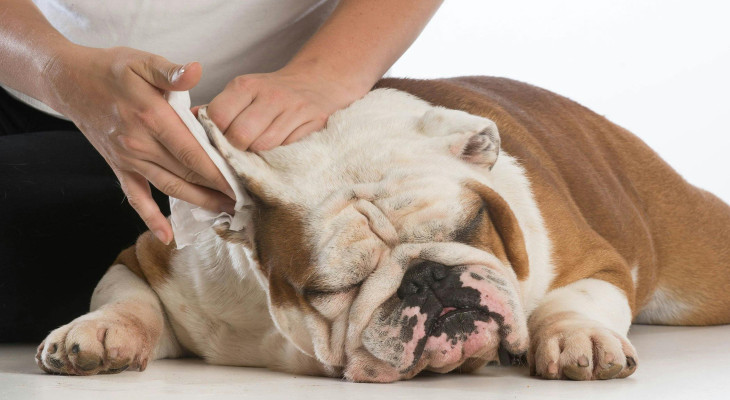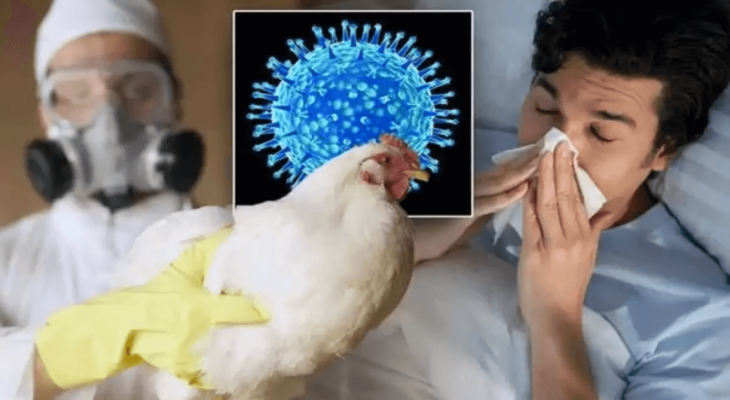Veterinary Middle Ear Surgery, Types, Causes, and Treatment
2023-09-10 11:27:53 313
The ear is a complex and vital organ for hearing and balance in animals. This organ comprises three essential parts: the outer ear, the middle, and the inner ear. These parts play a fundamental role in maintaining hearing and balance in animals. Proper hearing allows an animal to listen to the sounds of predators and prey, which is crucial for their food and survival—proper balance aids in the movement and coordination of animals.
The outer layer is associated with the pinna and the ear canal. Pinna is the visible part of the ear that helps collect the sound waves and lead them into the ear canal. The second part of the ear is the middle ear which contains three tiny bones (malleus, incus, and stapes) called ossicles. These help amplify the sound waves and direct them to the inner ear. The last part, the inner ear, consists of the vestibular system, also called the organ of balance.
Several animals or pets face hearing problems as a result of untreated conditions. So, as a pet owner, if you find ear problems in your furry companions, you must go for a complete check-up with an ENT veterinarian. The ear's functionality also significantly impacts the animal or pet's life.
This blog will closely examine middle ear surgery, its causes, and treatment.
Keep reading this blog to learn more!
What is Veterinary Middle Ear Surgery?
Veterinary ear surgery is a surgical procedure to treat problems in the middle ear of animals. This veterinary surgery procedure varies depending on the animal’s ear condition and the surgeon's recommendations. The ear surgeon makes an incision through the ear canal to access the middle area of the ear.
Veterinary ear surgery may be performed to treat several conditions, including:
- Perforated eardrum: A hole in the eardrum that can happen due to injury, infection, or barotrauma (changes in air pressure).
- Otosclerosis: Otosclerosis is a condition that causes the stapes to become fixed in place. This can lead to hearing loss.
- Otitis media: This is an infection of the middle ear. It is most common in cats and dogs.
- Tympanosclerosis: Tympanosclerosis is a condition that causes the eardrum to become thickened and scarred. This can cause hearing loss.
- Cholesteatoma: Cholesteatoma is an abnormal growth of skin cells in the middle ear. It can cause dizziness, hearing loss, and facial nerve damage.
Veterinary ear surgery can be performed under general or local anesthesia. The type of anesthesia used will depend on the specific ear surgery procedure that is being performed.
Types of Middle Ear Surgery
There are many types of veterinary ear surgery, but some of the most common include the following:
Tympanoplasty: This ear surgical procedure is performed to treat a perforated eardrum. The eardrum is the thin membrane separating the middle and outer ear. A perforated eardrum is caused by trauma, infection, and barotrauma. This procedure can be performed to restore the hearing loss.
Lateral bulla osteotomy (LBO): This surgery opens the tympanic bulla. LBO is often performed with TECA to allow for better visualization and access to the middle ear.
Total ear canal ablation (TECA): This surgery removes the entire ear canal and tympanic bulla (the middle ear cavity). TECA is typically performed for chronic ear infections that have not responded to medical treatment. TECA results in permanent hearing loss in the affected ear.
Cholesteatoma removal: This surgery is performed to remove a cholesteatoma. A cholesteatoma is a non-cancerous growth of skin cells in the middle ear. It can cause hearing loss, pain, and dizziness. Cholesteatoma removal is typically performed for chronic ear infections that have caused a cholesteatoma to develop.
Mastoidectomy: This surgery removes infected or diseased bone from the mastoid bone. The mastoid bone is located behind the ear and is connected to the middle ear. Mastoidectomy is typically performed for chronic ear infections that have spread to the mastoid bone.
Following your veterinarian's instructions is essential if your pet is undergoing middle ear surgery. This will help to ensure a successful outcome.
Common Conditions that Affect the Animal’s Middle Ear
There are several conditions that affect an animal’s middle ear. If these conditions are not treated on time, your animal or pet can suffer from hearing loss. Here are some of the most common conditions;
Tympani Membrane Perforation: This is an eardrum hole caused by infection, trauma, and foreign objects in the ear. Ultimately, the problems can lead to hearing loss or acute infection.
Ostitis Media: This condition occurs in the outer ear canal and is caused by yeast or bacteria. It mainly enters the ear canal through moisture or injury. This condition can be acute or chronic and eventually leads to hearing loss.
Cholesteatoma: This is an abnormal growth of skin cells inside the deep side of the ear. This condition is rare in animals or pets but can lead to severe infection if left untreated.
Eustachian Tube Dysfunction: This is a condition where the middle ear tubes become blocked. It can cause a build-up of fluid in the middle ear. Ultimately, it results in discomfort in hearing.
Precise Treatment of Animals Middle Ear Surgery
The treatment of the middle ear surgery varies depending upon the severity of the animal's ear condition. This may include a physical examination, imaging, and laboratory tests. After the diagnosis, the veterinarian will suggest medications like antibiotics to prevent infection, and in some cases, middle ear surgery is required.
Here are some of the most common middle ear treatment options:
Medication: Antibiotics are often used to treat infections of the middle ear. Pain relievers and anti-inflammatory medications may also be prescribed to help relieve pain and inflammation.
Surgery: Surgery may be necessary to repair a hole in the eardrum, remove a foreign object, or remove infected or damaged tissue from the middle ear.
Ear cleaning: Regular ear cleaning is essential to help prevent outer ear canal infections.
Diet: A diet high in moisture can help prevent ear infections.
Environmental changes: If allergies contribute to ear infections, environmental changes, such as avoiding dust or pollen, may be helpful.
To Sum Up!
In brief, common veterinary diseases can devastate our furry pets and animals' health. This may lead to long-term health problems, physical discomfort, and the possibility of transferring these diseases to humans. By focusing on regular check-ups and examinations and making ourselves aware of veterinary ear surgery procedures, you can collaborate with your veterinarian and other animal health experts. In this way, you can take the initiative to treat and prevent our animals from diseases.
At Vet and Tech, we provide the ultimate source of online veterinary learning and educational resources. Moreover, you can also explore common animal diseases and their solutions.
Let’s start your veterinary journey with the most reliable platform. You can get the opportunity to earn CE credits by attending free veterinary webinars.
Frequently Asked Questions (FAQs)
What are the best animal health solutions?
Regular veterinary care is essential to maintaining the health of your pet. This can include regular check-ups, vaccinations, exercise, and a nutritious diet.
How can untreated ear diseases impact your animal?
Animals or pets demand extra care and attention. In the case of ear diseases, it’s important to diagnose early and start treatment immediately. But, if they are left untreated, it may cause chronic infection and hearing loss.







